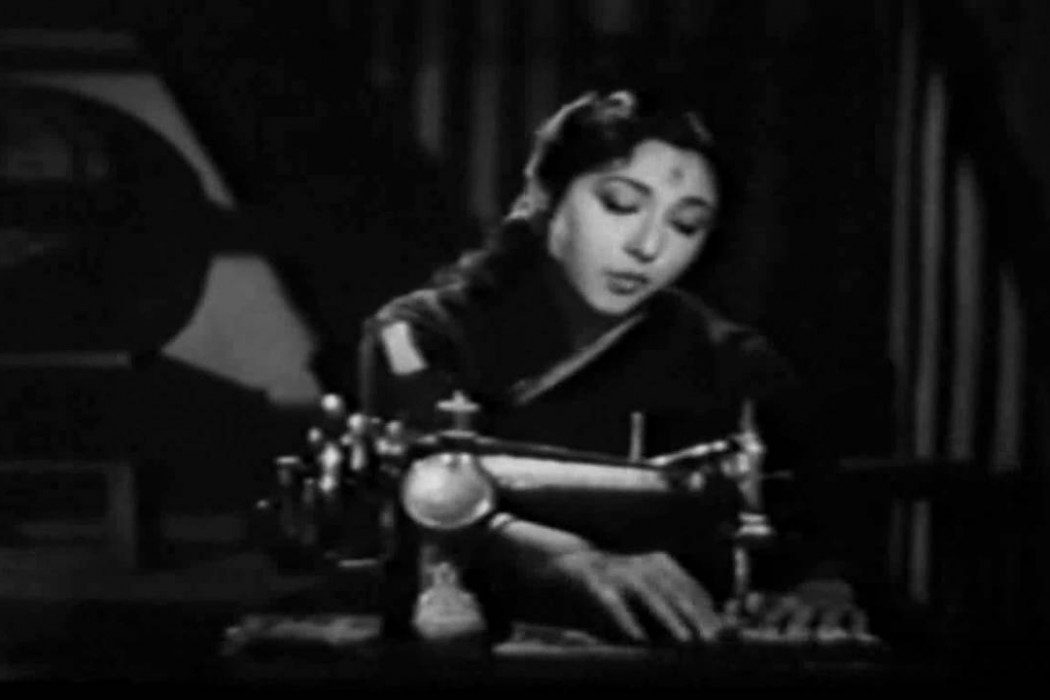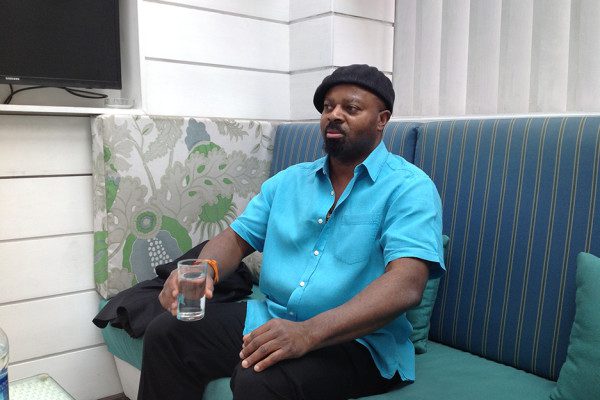The geniuses of IPTA conducted the first experiments with truth, catalysed the cultural discourse that shaped the golden age of Indian cinema. The glitz of the 100 crore clubs can never erase their memory, says Amit Sengupta, for what is truly great will never die.
In the open nocturnal summer terraces that would run into each other across the many terraces of close-knit neighbourhoods in the small-town mohallas of western UP, surrounded by mango orchards, peepal and neem trees and water pumps, and in the open-to-sky courtyards under the night sky with the evening star still shining bright and the big yellow half-moon with the old grandma knitting inside, the songs would float like high culture floating in time and space. Sometimes, like a Jibananda Das poem, where a woman would arrive at midnight with a half-eaten orange, the songs would enter mosquito nets tied to the branches of a guava or jackfruit (miracle seeds from Tezpur or Guwahati) tree, and the entire cosmos would descend inside this porous, luminescent space of enclosed half-light.
The Urdu service of the All India Radio would be broadcasting the songs of time present and past and enter the innocence of our childhood like a bioscope of dreams, fantasies and fairy tales. Images would run into little bylanes even as the songs would mingle with mother’s bangles and footsteps, and become an epical narrative in our eclectic unconscious. It was a melody which did not put us to sleep.
Like RK Narayan’s Malgudi Days, Sukumar Ray’s Aabol Taabol, Chandamama tales of Vikram aur Betaal, or Enid Blyton’s stories, the All India Radio, Radio Ceylon, and the Urdu service would be integral to the 1960s/early 70s small town childhood in a country that was still grappling with innocence, idealism and hope. That was most crucially reflected by the music and cinema of the times, including the poetry, literature, lyrics, screenplay, sound and music, cinematography, content and stories of the era. This was when the freedom movement’s essence and ethos of progressive cultural idealism and resistance was still alive and pulsating, despite the mass tragedies, separations and exile of the Partition. And, despite India, gradually, but surely, losing its way.
Calcutta and Bombay became the fragmented cosmos of post-Independence idealism, the epicentres of angst and anger; they became the longing to finish the unfinished sentence.
Calcutta and Bombay became the fragmented cosmos of post-Independence idealism, the epicentres of angst and anger; they became the longing to finish the unfinished sentence, the grappling with destiny and the will to change, the slow, rhythmic creation and destruction of a dream. In black and white and sepia, with subtle poetry as backdrop and nuance, the discovery of the meaning of life, and the birth of a post-colonial nation-state, moved in jarring synthesis with the transparent and brutish destruction of the values, visions and optimism of the freedom movement, the sacrifices, the hangings and kalapani, the notes, letters and autobiographies, the literature and poetry and songs, the relationships of the old and new, collective and individual. This was because the nation seemed to be in a state of betrayal. The establishment had betrayed the nation. The dream of the freedom movement was dying and dead.
The idea of innocence was already destroyed. The new, fragmented society with stark inequalities had already become entrenched. The feudal society had found its ways into the corridors of power in Delhi and the state capitals. The new cities were drenched with the sweat of hard labour and unfulfilled aspirations of migrations and loss. Between the homeless and the condemned, and the struggling and still undefeated, the new nation seemed to have found its state of denial.
This freedom, as the communists had been saying all along, seemed increasingly false. Loaded in favour of the rich and powerful. The cruel, the corrupt, the expoloiter. “Yeh azaadi jhooti hai,” the slogan went.
The idea of innocence was already destroyed. The new, fragmented society with stark inequalities had already become entrenched.
Between Naya Daur (1957), where the hypothetically pure, idealistic village builds a collective road as perhaps the first original nation-building effort at the grassroots in the Nehruvian era, and CID (1956), in which Majrooh Sultanpuri pens an eternal song with the music by OP Nayyar, the caricature of Johnny Walker, both, as a dropout and as a Chaplinisque fighter on the margins taking on this world with spoof, humour and caricature, the contradictions of this inevitable vicious circle becomes complete. The song, “Aiye dil hain mushkil hain jeena yahan, zara hatke zara bachke yeh hai Bombay meri jaain,” moving with the rhythm of this struggling working class city of the times, is at once a critique of a cold-blooded, incipient, unethical political economy and the profound message that it is also the end of humanity and an egalitarian society with ethics, compassion and values. “Insaan ka nahin koi naamo nishan.”
In the spoof is also the suppressed cry and the scream that it should not be like this, that we had thought of making a different nation, that we had interpreted freedom differently. Indeed, the final notes by the woman in the song resurrects a moment of resilience and the finality of destiny. The female symbol as hope and life affirmation.
Truly, the geniuses of the Indian People’s Theatre Association, closely aligned with the Progressive Writers’ Association formed in the late 1930s with great writer Munshi Premchand as its founder president, were the legendary catalysts of a cultural discourse which shaped Indian cinema, especially in Bombay and Bengal. They conducted the first experiments with truth and the contradictions of life, changed the discourse on love and sensuality, made it refined and nuanced, touched it with delicacy and distance, layered it with both sorrow and longing. They entered the streets and alleys, dark and dingy, full of sunshine and possibilities, exploring the contradictions of a society in transition between chaos, stasis, stagnation and half-open doors and half-moonlight.
They entered the streets and alleys, dark and dingy, full of sunshine and possibilities, exploring the contradictions of a society in transition.
And yet, the night sky on the terraces remained luminescent on full moon nights; Indian democracy floundered and failed, but this high art moved into the most invisible margins of lived space and consciousness, and gave us a collective and original worldview, of both the poverty of philosophy, and the experiment with truth which failed. The discovery of India which never discovered itself.
And yet, they lifted our sensibilities, touched our inner core, made us sensitive and refined. They made us better human beings, resolute dreamers, softer lovers, resilient and stoic creatures. This was an aesthetic revolution, which, through melody and melange, became the scaffolding of an entire nation in despair, and, yet, exalted our imagination and visions into a realm which was noble, sublime, beautiful, thought-provoking, sensitive.
Look at the woman, Mala Sinha, weeping uncontrollably in the arms of Raj Kapoor in the epical Sahir song, “Woh subah kabhi to aayegi”, or a broke Dev Anand walking into a sunset slum eating chana, singing, “Asli kya hain, nakli kya hain, poocho dil se mere…” and you know that this was no art for art’s sake. This was both bitter realism and magical aesthetics belonging to the existentialism of life and history and its amazing impossibilities.
This was an aesthetic revolution, which, through melody and melange, became the scaffolding of an entire nation in despair.
They changed our open-to-sky courtyards, our terraces, our streets and bylanes, our inner lives and political unconscious. They stretched individual genius and turned it into a collective craft of both despair and hope, in eternal synthesis: these geniuses of IPTA and all those who worked in tandem with them across the threads of sublime artistic greatness they shared. Name them, and you always fear that you will miss him or her, and, yet, we should name them again and again: Sahir Ludhianvi, Kaifi Azmi, Shailendra, Jan Nisar Akhtar, Majrooh Sultanpuri, Salil Chaudhury, Sajjad Zaheer, Balraj Sahni, Chetan Anand, SD Burman, Ritwick Ghatak, Bhishm Sahni, Premchand, Rajender Singh Bedi, Sadaat Hasan Manto, Yashpal, Mohan Rakesh, Ismat Chugtai, Bimal Roy, Hrishikesh Mukherjee, Guru Dutt…the list is small and infinite.
That their music and poetry and cinema continue to play the game of immortality in the era of morbidly short attention spans and abysmally low, often cheap cultural discourse, where everything dies as fast and as crassly as the market, the entertainment industry and the consumer society wants it to live, is a kind of miracle. It is a miracle which still survives within everyday signs of a panting, bloated, unthinking, unfeeling society in a relentless state of clichéd flux where sense and sensibilities have found the lowest common denominator. If a society is reflected by its arts and culture, it music, melody and images, popular or otherwise, this is surely the gutter staring at you with eyes wide open and the stink spread far and wide.
The irony is that the nation-state seems to be enjoying the stink. In the era of the multi-crore rich man’s ‘bubble’, with no memory of the idea of the self or collective, where we celebrate the item songs of obscene voyeurism, where the female body breaks, deforms, distorts and degrades itself via a male camera across PVR screens, and the lyrics and music degenerate into sexist predatory sounds of abject crudity, it is impossible to imagine that memory or self can still find a shared breathing space. And yet, the songs of IPTA and its allies continue as melody and memory; it’s both magic realism and a truly beautiful miracle.
It tells us a simple story: that all the gutters might become 100 crore clubs, but, what is truly great, will never die.


